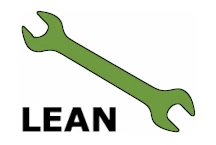
What is SMED
SMED (Single-Minute Exchange of Dies) is a series of techniques to facilitate changeovers of production machinery as fast as possible but at least in under 10 minutes.
Why SMED
General advantages
- Reduces change over time leading to:
- Increased availability
- Greater flexibility to meet customer demand
Reduces waste types
When to use SMED
Essential conditions
Non-essential conditions
None
N/A
How to implement and use SMED
Implementation
General:
- Changeover activities are split into:
- Internal activities → Take place while the machine is down
- External activities→ Take place while the machine is running
- The goal is to move as many activities from internal to external, thus minimizing downtime.
- Be aware that implementing it may initially require resources to be invested.
Process steps:
- Identify & classify activities (internal/external)
- Make a video of the current changeover process
- Analyze and separate activities (internal/external)*
- Convert internal- to external activities
- Use engineering changes to convert remaining internal- to external activities
- Minimize external activity time
*) Use can use the Template SMED.
Use
- Keep continuously improving the situation with the long-term objective of zero changeover time.
Where to find it
IASSC Body of Knowledge:
Lean: 17
Yellow ➔ N/A
Green ➔ Apply
Black ➔ Create
Lean Six Sigma: –
Yellow ➔ N/A
Green ➔ N/A
Black ➔ N/A
Lean tools are great. Results are better.
Take the next step with Procestimal — expert-designed modules that help you apply Lean with real-world impact.
Try it free for 30 days — no credit card, no pressure.
About the Author
Floris Lap is an IASSC-certified Lean Six Sigma Black Belt and founder of Procestimal. He empowers organizations to maximize value and reduce waste through practical Lean Six Sigma solutions—contributing to a more sustainable world where businesses thrive with minimal resources. Contact us
Last updated on:
